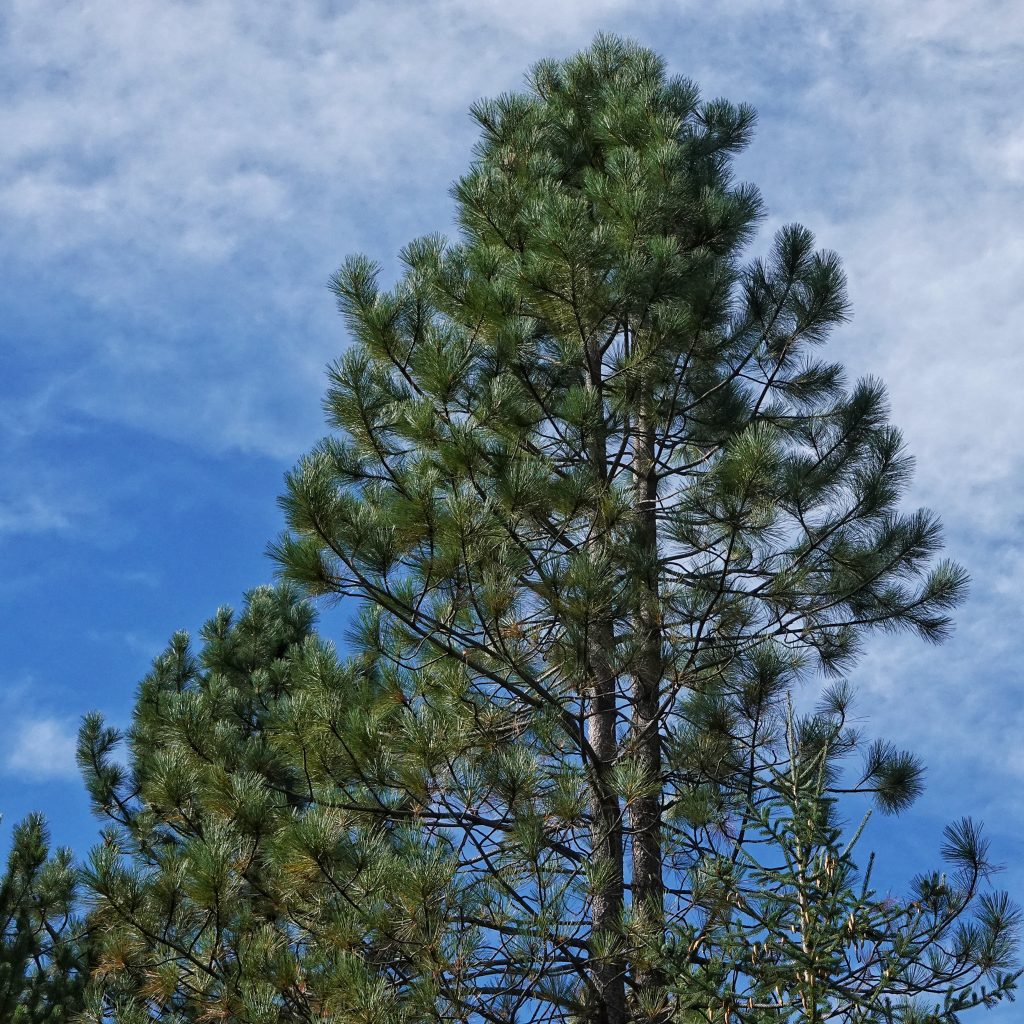
As I mentioned in the profile of Pinus contorta I have set myself the task of learning to identify at least some of the common conifers of our region. And Pinus ponderosa is the second stop on that journey. I’ve now made 2 recent trips to a wet meadow near South Prairie in the Gifford Pinchot NF in Skamania County, Washington, which, at 3,000’ elevation, appears to be in a transition zone, for I have now found 11 species of conifers in or near that meadow. It should be noted that very little of what I’ll have to say in these ensuing conifer profiles was known to me before September 1, but I’ve now utilized this information extensively and feel very confident in identifying most of the wild conifers I see, if not to species then at least to the clade within the genus.
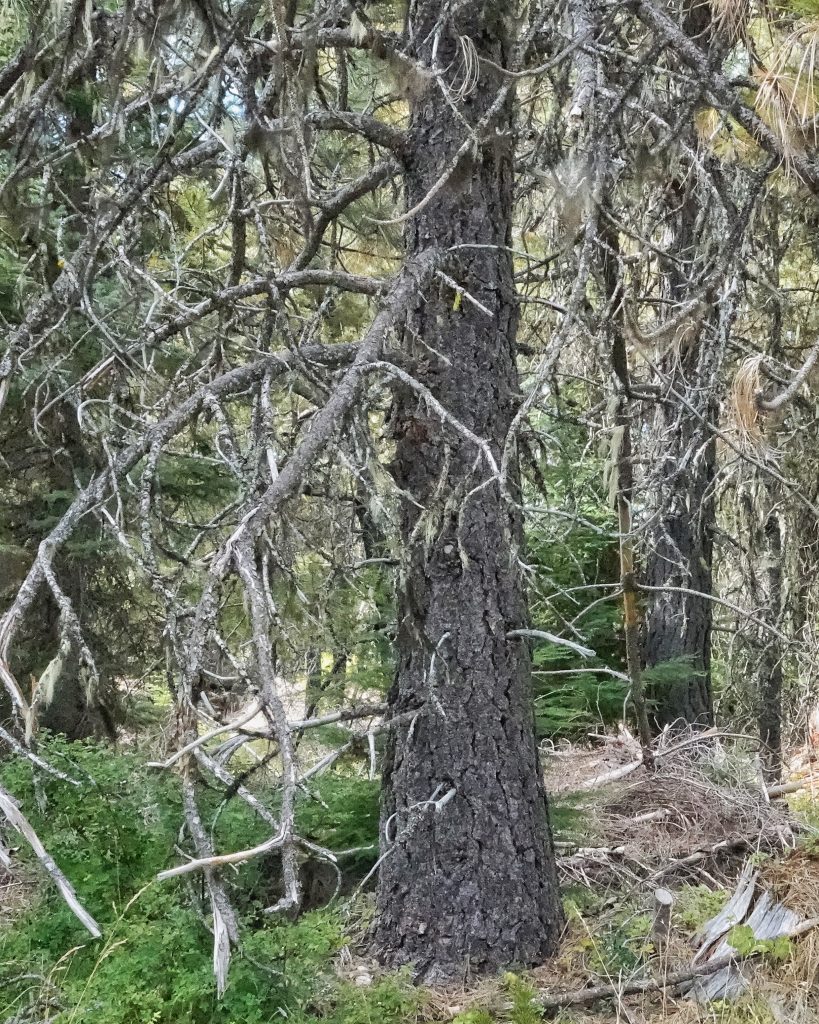
For all of the troubles I had remembering how to differentiate Ponderosa and Lodgepole (Pinus contorta) pines, it’s actually quite easy. Ponderosas have 3 needles per bunch (fascicle), while Lodgepoles have only 2 (although it should be noted that on any given Ponderosa there may well be fascicles with only two needles-but the vast majority will have three). And Ponderosas have needles that are 5-10” long that only persist for 2-3 years, giving the branches a tufted appearance, while Lodgepole needles are 1.5-3” long and persist for 4-8 years, giving the branch tips a long, even, appearance. Ponderosa Pines and Lodgepole Pines, along with Jeffrey Pines and Knobcone Pines (both of which also have 3 needles per fascicle, but in our region occur primarily in sw Oregon/nw California), constitute the yellow pines of our region.
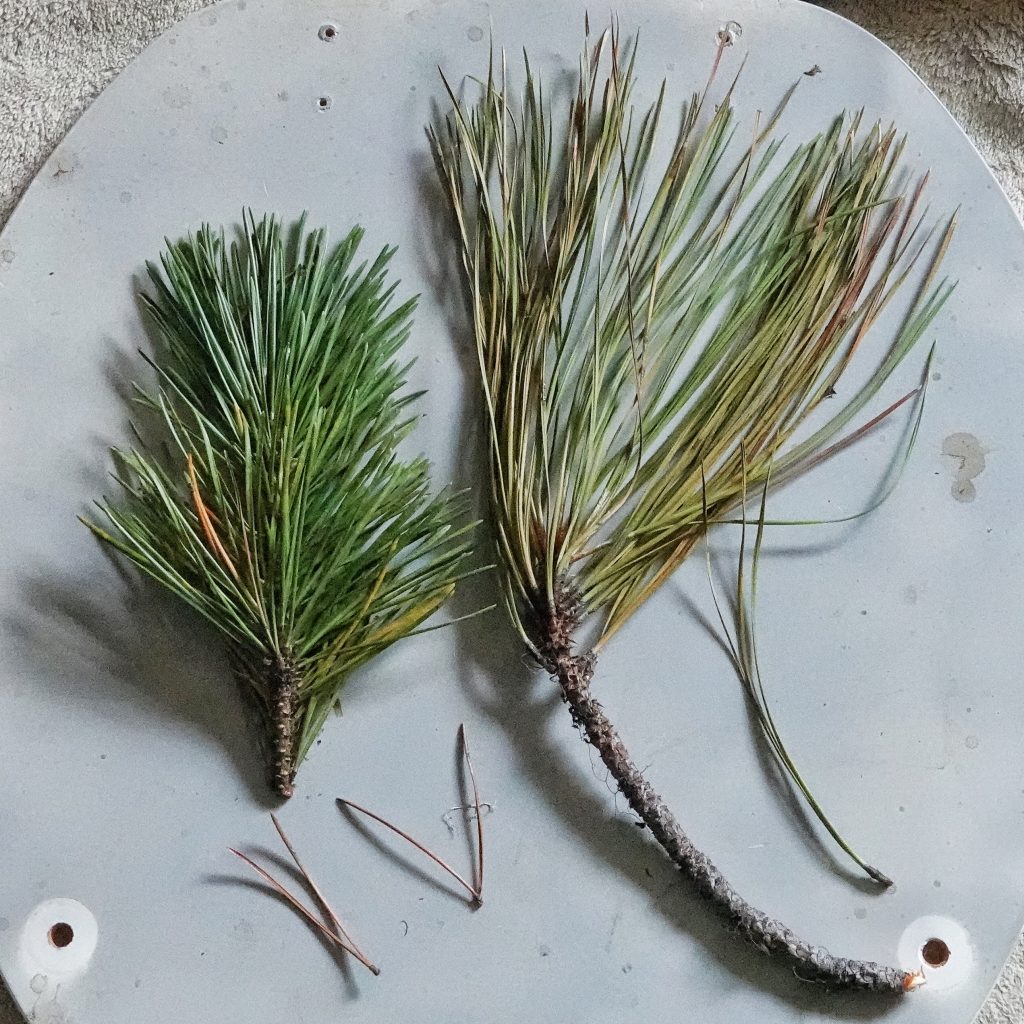
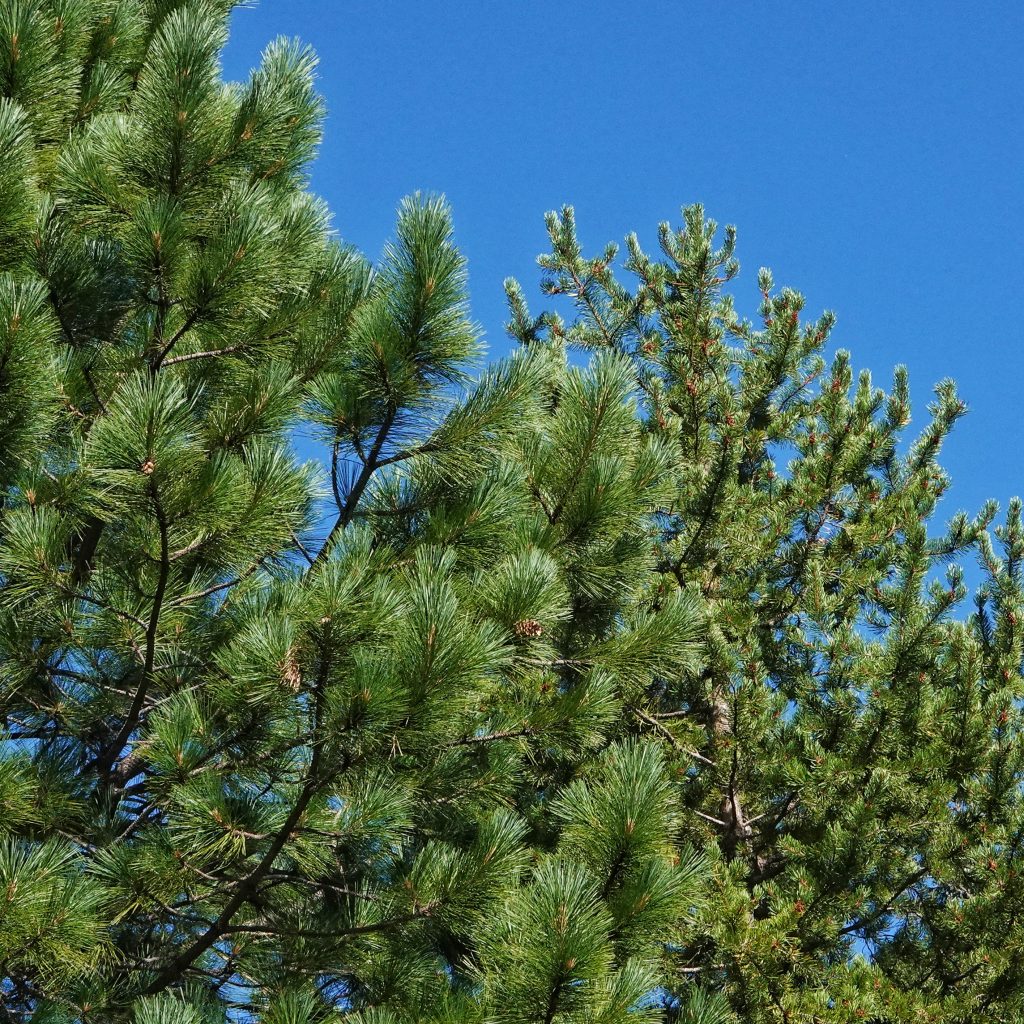
If one has a branch in hand, white pines are quite easy to differentiate from the yellow pines, because white pines have 5 needles per fascicle. It is a little trickier if you are standing below a tree and can’t reach a branch, because some white pines have needles over 4” long, that can present a tufted appearance because they only persist 3-4 years. But there are always abundant needles in the leaf litter below a tree, and it’s usually pretty straightforward to determine what type of needles have fallen from a given tree.
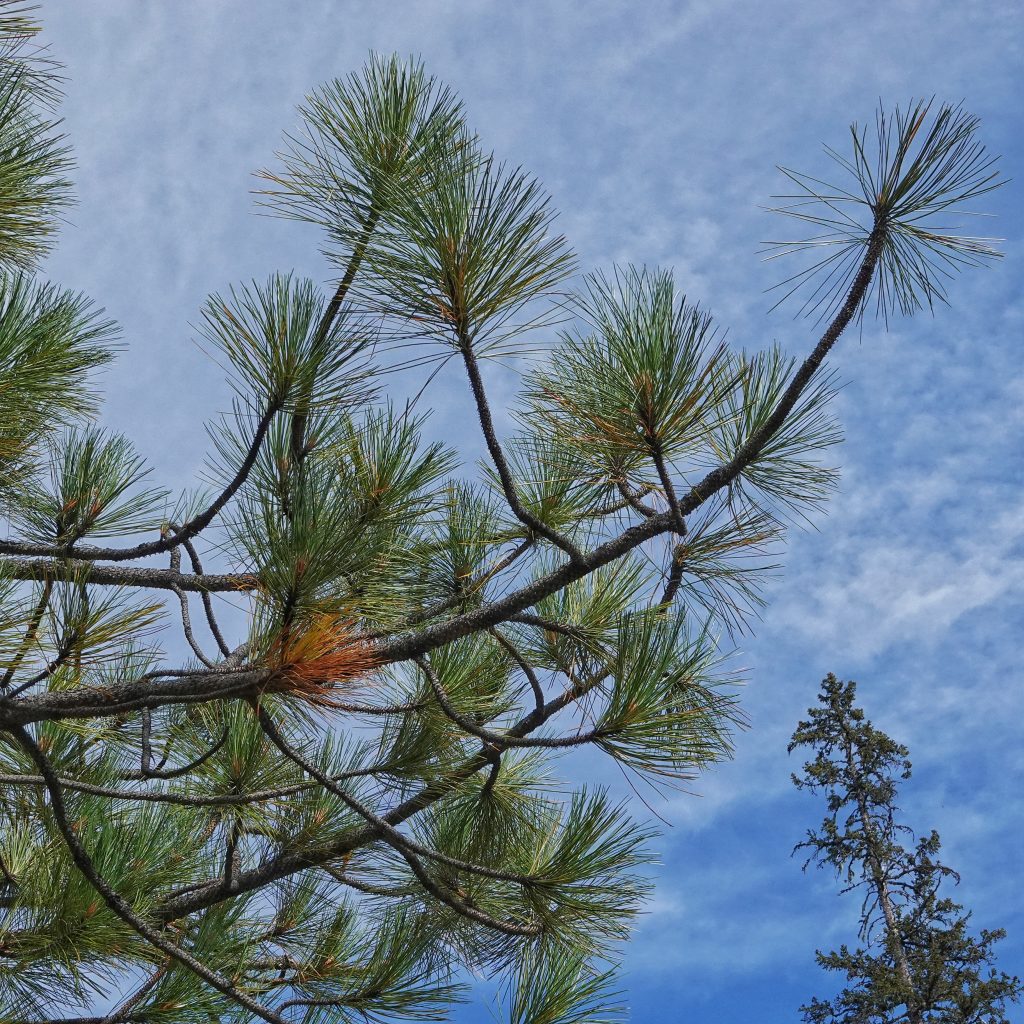
Ponderosa Pines are second only to Douglas fir in the amount of commercial harvesting, but well before it’s appeal became apparent as a tree to be logged the indigenous cultures had many uses for it. They ate the seeds and the inner bark, and chewed the pitch as a gum, as well as for tuning their flutes, salving their wounds and skin irritations, holding hair in place, and as a general purpose adhesive. Entire canoes were carved from single logs, and smaller sections were used to build furniture and implements. The needles were used as a fire starter, woven into small baskets, and boiled down to treat respiratory illnesses. For a more complete list see the Native American Ethnobotany Database, which has 148 entries for this tree.
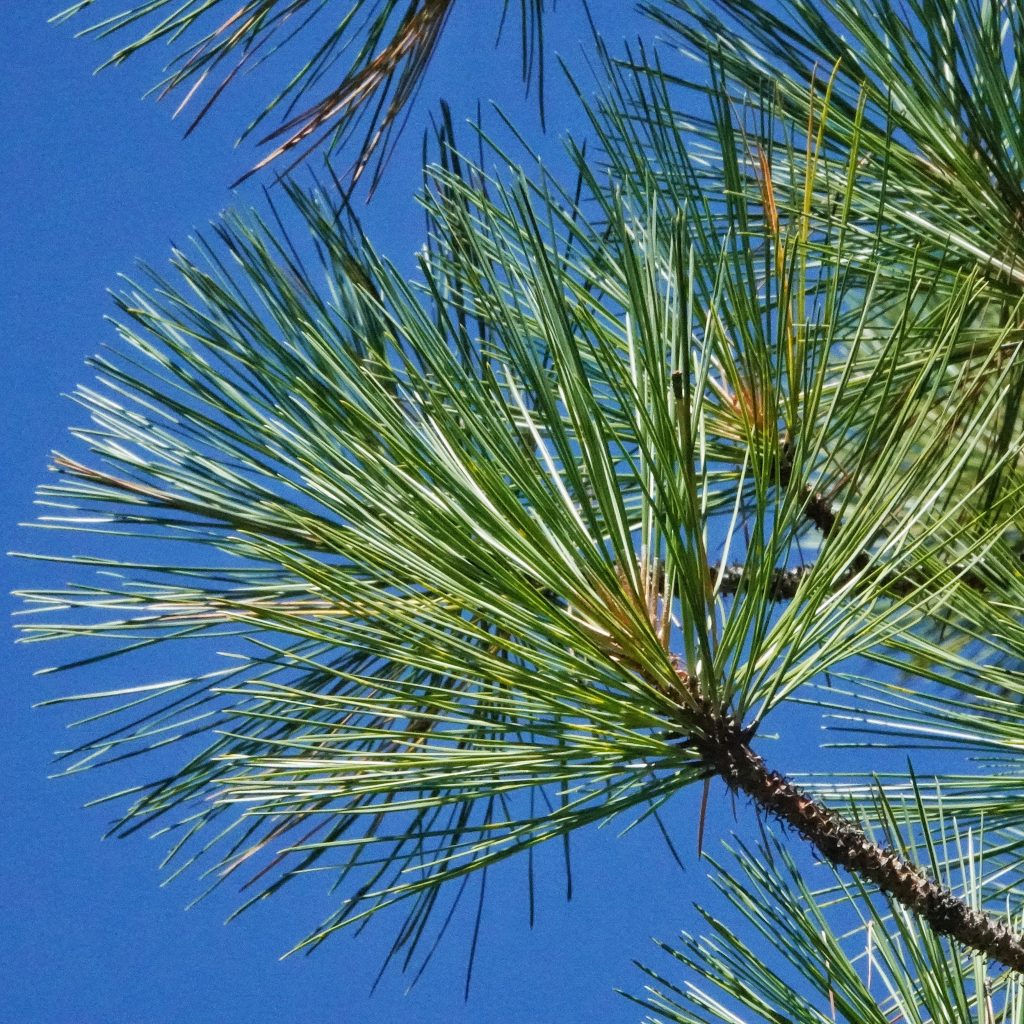
Ponderosa Pines do not have serotinus (sealed by resin) cones, and they open when mature, rather than by the heat of a fire. Ponderosas deal with the inevitability of fire by having very thick bark that can withstand a great deal of scorching, and the canopy of mature trees begins high enough above the ground that it is unaffected by grass- and small brush fires. And occasional fires may be beneficial to the trees protection system by promoting resin duct production, which has been shown to be beneficial in fighting off the Western Pine Beetles which I wrote about in the Lodgepole Pine profile.
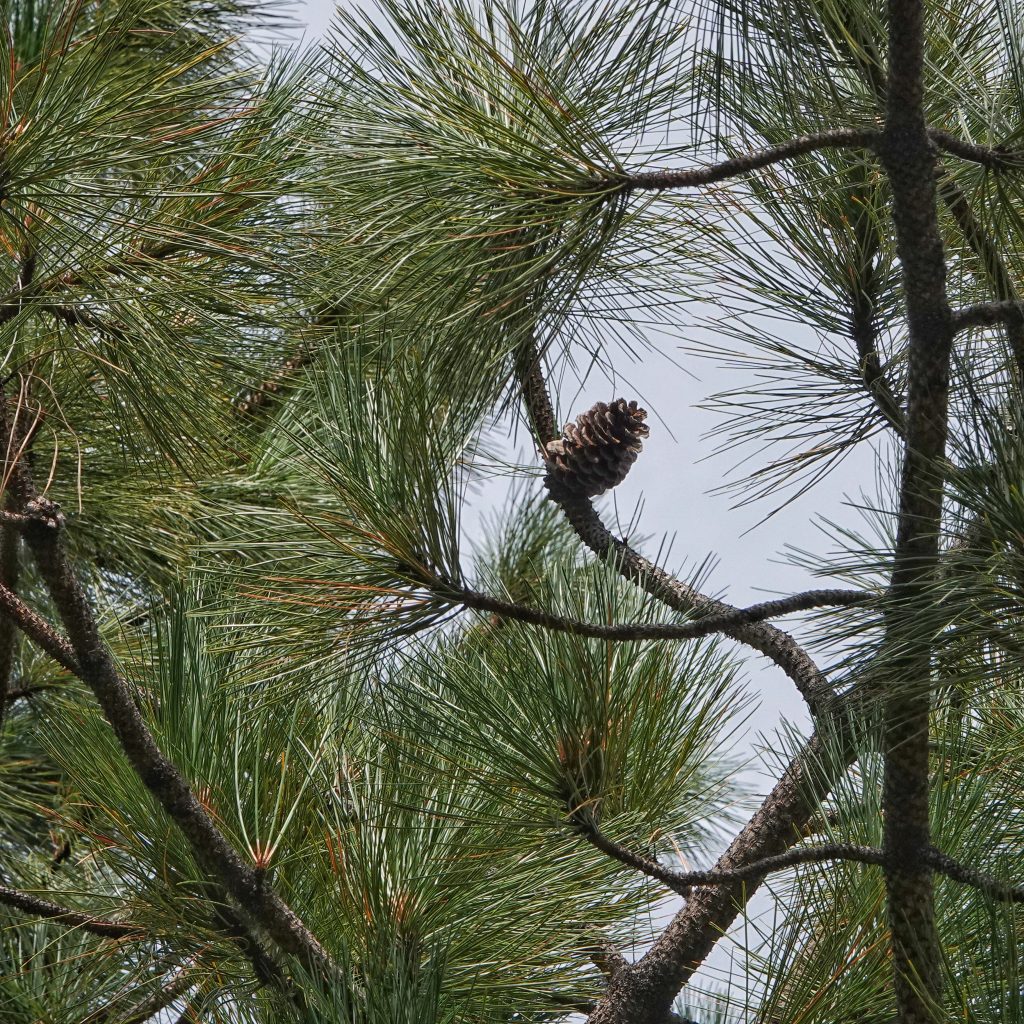
Description-Large (up to 200’ tall and 8’ in diameter) pine with yellow brown to reddish brown bark with deep furrows (giving it a jigsaw puzzle appearance), and large tufts of needles at the branch tips; needles 3 (though occasionally 2) per fascicle, 5-10” long; cones slightly asymmetrical, 2-7” long, with straight spike on the scales.
Similar species–Lodgepole Pine has two needle per fascicle; Jeffrey Pine and Knobcone Pine have cones longer than 7” and only grow wild in sw Oregon/nw California; white pines have 5 needles per fascicle.
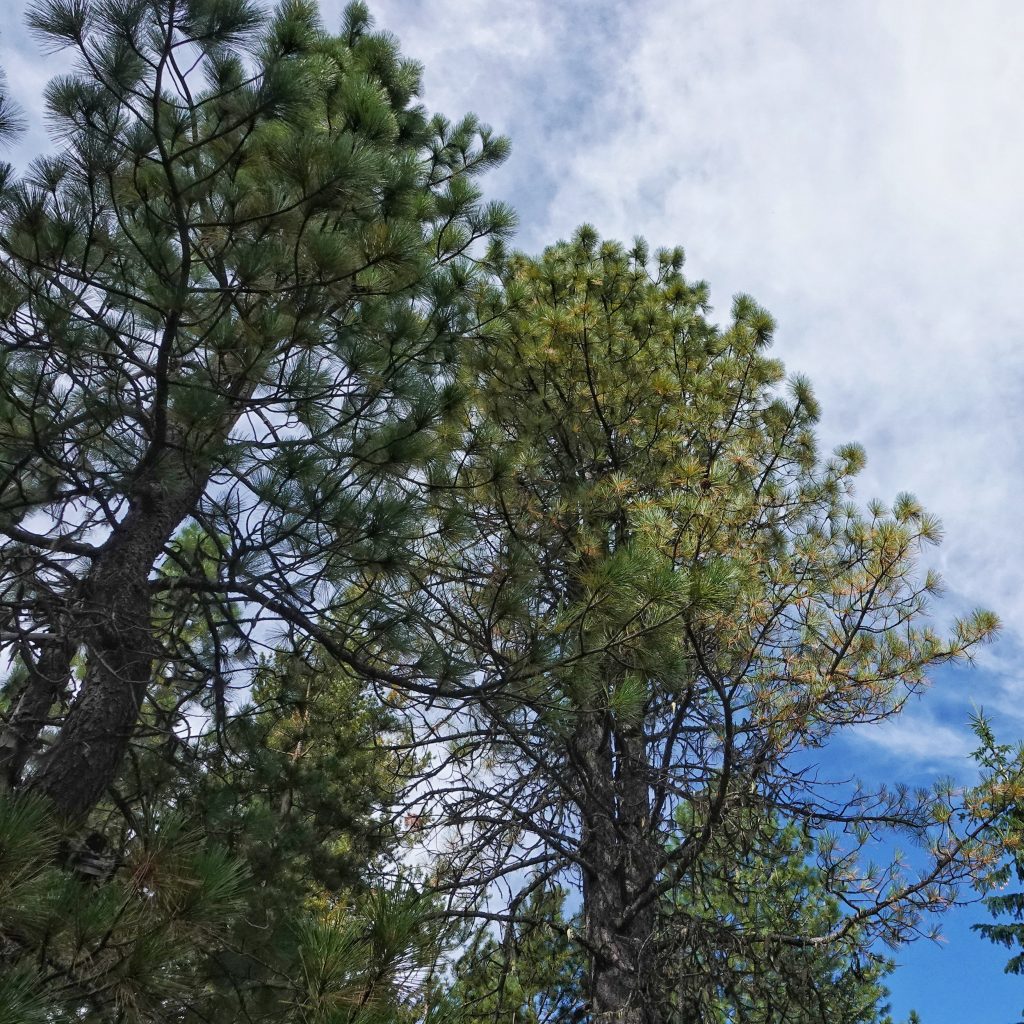
Habitat-Mesic to dry, open, forests at low to middle elevations.
Range-Western North America; in our region it is found in montane areas from the Cascades east, as well as on the Olympic Peninsula, sw Oregon, and sporadically in appropriate habitat in the Willamette Valley and northern Puget Trough.
Reproductive timing-Cones begin forming in spring, pollen is produced in May and June, and the cones mature in early fall of the following year.
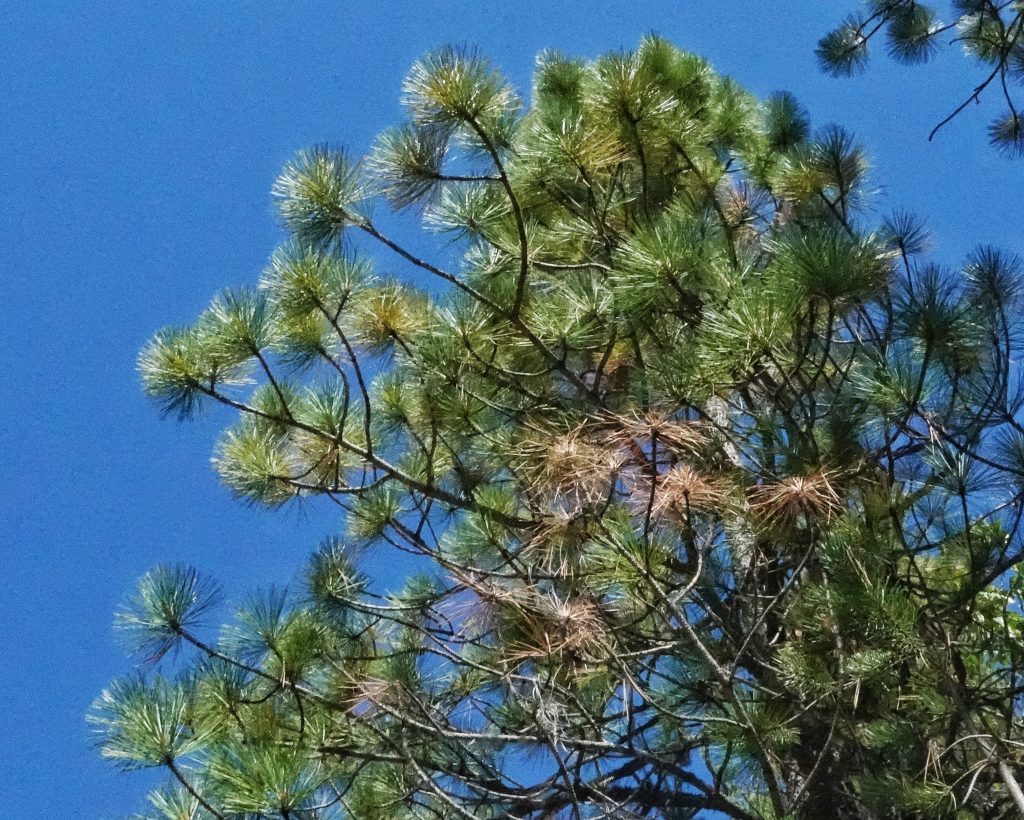
Eaten by– The leaf beetles Altica ambiens, Colaspidea smaragdula, Cryptocephalus atrofasciatus, Phyllotreta zimmermanni, Plateumaris nitida, Syneta carinata, Pachybrachis sp., and Glyptoscelis sp., and larvae of the long-horned beetle Trichocnemis spiculatus; larval host for the siricid wood wasp Sirex varipes; the stinkbug Brochymena hoppingi; the leaf mining moths Exoteleia anomala, Argyrotaenia tabulana, Chionodes retiniella, Coleotechnites sp., and several others, as well as a general larval host for the moths Lophocampa argentata, Givira lotta, Caripeta aequaliaria, Enypia griseata, Gabriola dyari, Macaria adonis, Melanolophia imitata, Neoalcis californiaria, Pero behrensaria, Phaeoura mexicanaria, Sabulodes edwardsata, Stenoporpia pulmonaria, Dasychira grisefacta, Orgyia pseudotsugata, Lithophane atara, many Dioryctria sp.,Coloradia pandora, Synanthedon novaroensis, Synanthedon sequoiae, Sparganothis tunicana, Choristoneura freemani, as well as many others; larval host for Pine White and Western Pine Elfin butterflies; Clark’s Nutcracker, crossbills, grosbeaks, jays, nuthatches, chickadees, and woodpeckers eat the seeds, as do chipmunks and squirrels; foliage is eaten by grouse and deer; porcupines and small rodents eat the bark and wood.
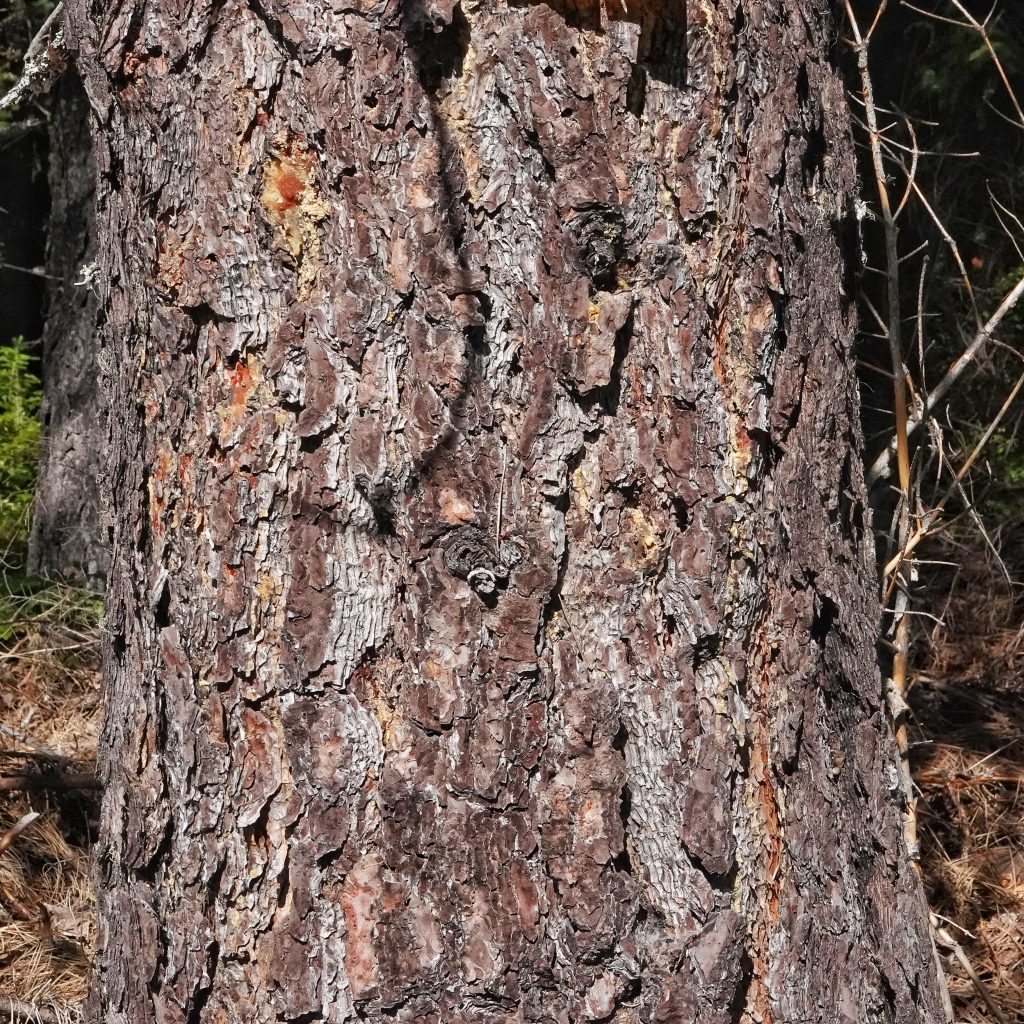
Etymology of names– Pinus is from the Latin word for ‘pines’. The specific epithet ponderosa is from the Latin for ‘weighty/ponderous’, and was assigned by David Douglas to this species because of how massive the first trees he found were.
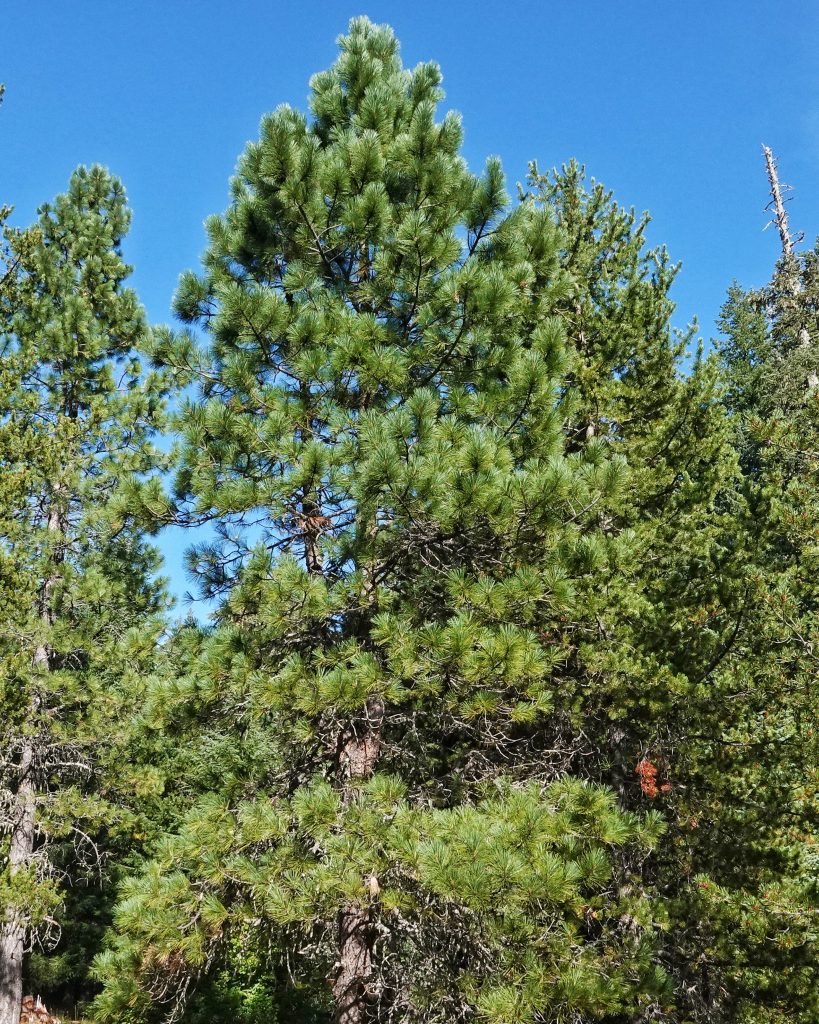
https://www.conifers.org/pi/Pinus_ponderosa.php
Ponderosa Pine (Pinus ponderosa) – Forest Research and Outreach
Ponderosa Pine, Pinus ponderosa | Native Plants PNW
Burke Herbarium Image Collection
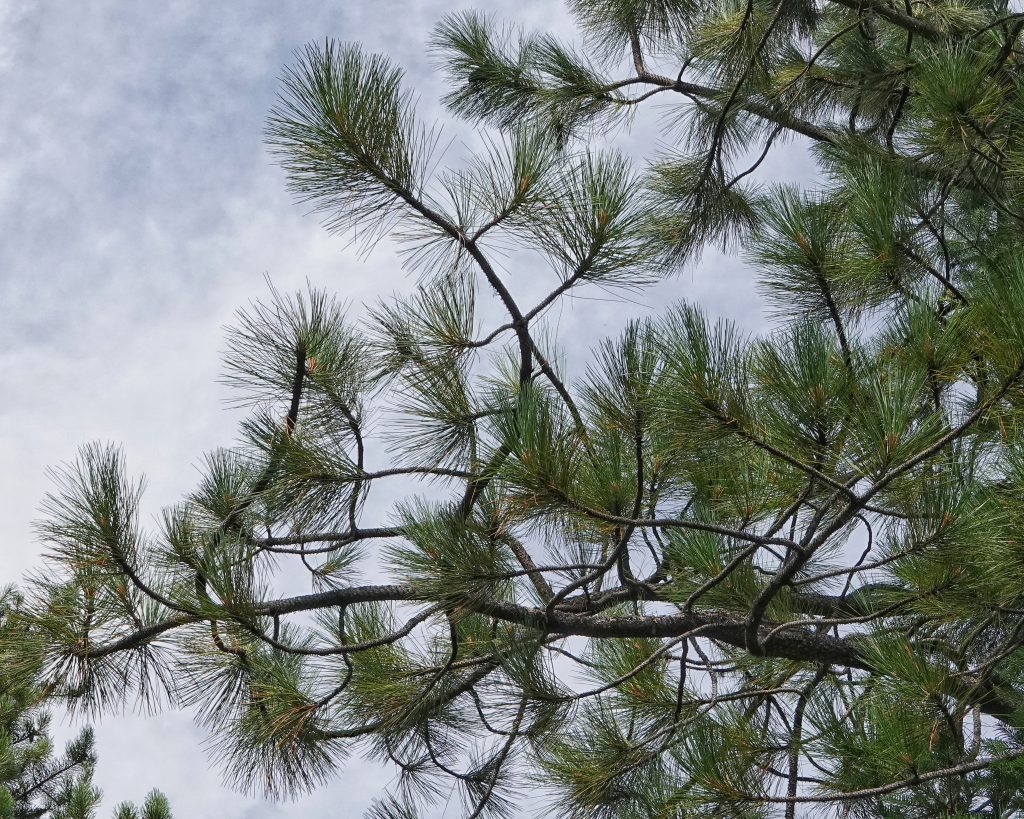
An easy trick to differentiate Jeffrey and Ponderosa Pine is to remember “Gentle Jeffrey.” As you point out Ponderosa cones have sharp spikes on the scales. Jeffrey cones do not have spikes on the scales so they are gentle. 🙂
Thanks, Michael! I’ll try to remember that tip.
Great to see an article of yours linked in one of the chapter letters for the Pacific Northwest native plants. Suksdorfiachapter – WA Native Plant Society
Wow! That is really cool! Thanks for letting me know, Brooke! I will have to check that out.